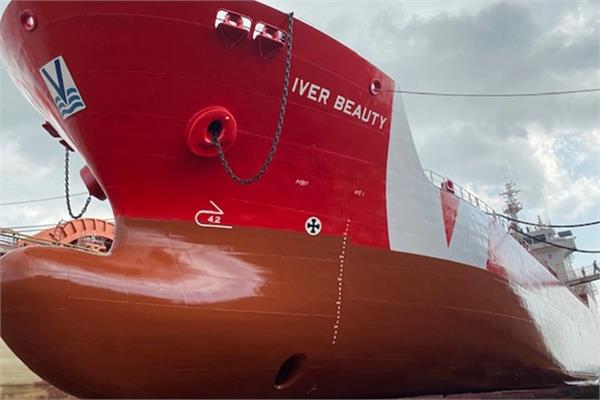
The new generation of Hempel hull coating system increases fuel savings by up to 21%.
The international paints and coatings manufacturer Hempel has recently announced the launch of the new Hempaguard Ultima silicone hull coating system, the latest addition to the Hempaguard portfolio. The new solution offers optimised performances while increasing fuel savings up to 21% and reducing emissions, allowing then vessel owners and operators to reach their decarbonisation goals.
“Hempaguard Ultima is our most significant innovation in a decade and an important step forward in our ability to protect and improve the most important assets of our customers. It has been designed to safeguard vessels from fouling with a unique two-layer system, enabling our clients to reach their sustainability objectives while also achieving operational excellence,” has stated Alexander Enström, the executive vice-president of Hempel A/S. “I am excited to introduce this ground-breaking innovation to our customers and look forward to following its success and impact in the market.”
As the maritime industry faces increasing pressure to decarbonise, Hempel has invested in further developing its cutting-edge innovation Hempaguard X7 – verified and validated for its performance and decarbonisation efforts by DNV – which has been applied to more than 4,000 vessels. With the new two-layer coating system Hempaguard Ultima, customers will now be able to better navigate the increasingly strict regulatory environment. The new product combines the tried-and-tested performance of Hempaguard X7 with the biocide-free silicone topcoat Hempaguard XL, preventing growth of marine organisms while ensuring long-lasting hull protection.
Advantages of Hempel Hempaguard Ultima hull coating system
- Up to 21% fuel savings;
- 160 fouling-free idle days;
- Only 0.9% speed loss on average[1];
- 6% immediate out-of-dock performance increase[2].
“With Hempaguard Ultima, the hull of a vessel is able to achieve a more stable surface smoothness, even into the fourth or fifth year of the docking cycle[3]. This reduces the risk of fouling after long service periods, even when the coating’s hydrogel and biocide can start losing some effectiveness. At the same time, the Hempaguard XL topcoat acts as a modulator for the release of biocide from Hempaguard X7, allowing a lower biocide amount per square metre to last longer,” has explained Diego Meseguer Yebra, the director of the Marine Research and Development division of Hempel A/S.
[1] Speed loss measurements are used to monitor how much a ship's speed has decreased compared to its optimal or expected speed. This is typically done by comparing the ship's current speed under certain conditions (like a clean hull and calm seas) to its speed after some time in operation, when the hull might be fouled. Speed loss is important because it directly impacts a ship's fuel efficiency and operational costs.
[2] Out-of-dock speed increase refers to the boost in a ship's speed that typically happens after it has undergone maintenance, particularly after its hull has been cleaned, repaired or repainted while the ship is in dry dock.
[3] Generally, ships have a five-year docking cycle, meaning they operate mostly at sea and come into dock every five years to be cleaned and have coatings re-applied.